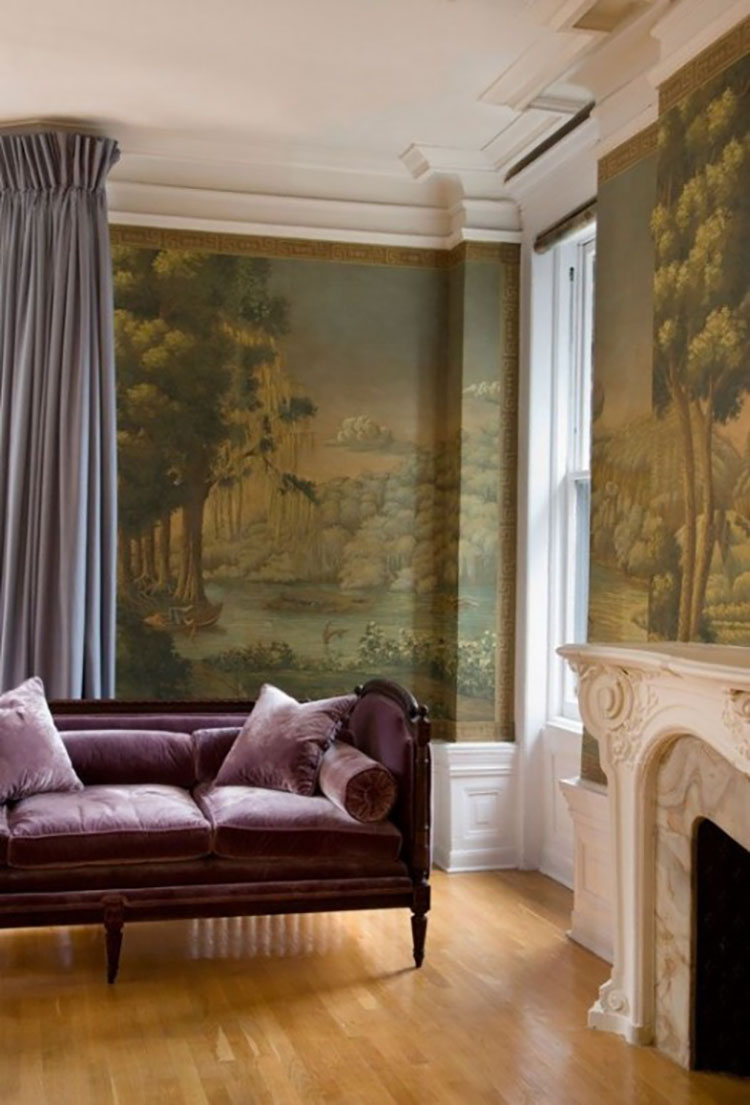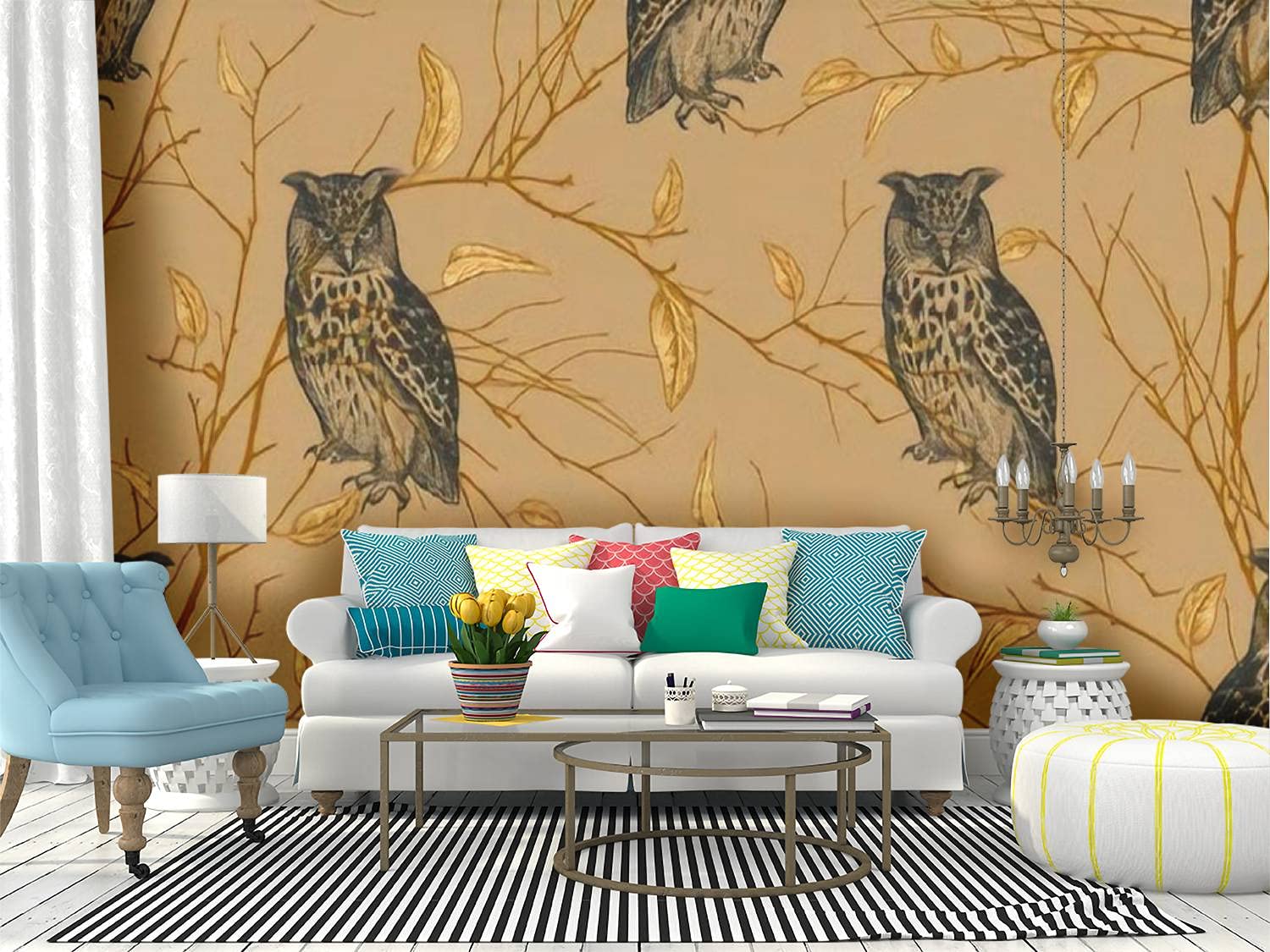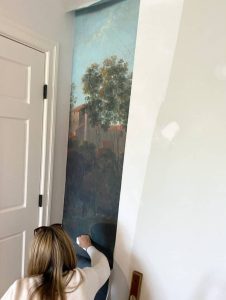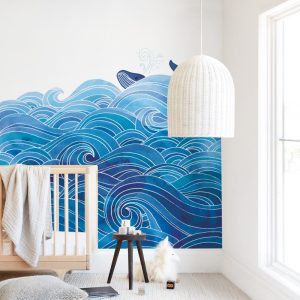Peel and stick murals have become a popular choice for home and office decor due to their ease of application and versatility. However, understanding the impact of environmental factors such as humidity and temperature fluctuations is crucial for ensuring their longevity and appearance. This article explores how these factors affect peel and stick murals and provides practical tips for installation and maintenance.
II. Understanding Peel and Stick Murals
Definition and Benefits
Peel and stick murals are large, adhesive-backed wall coverings that can be easily applied to various surfaces. They offer several benefits:
- Easy Installation: No need for glue or paste.
- Versatility: Available in various designs and sizes.
- Removability: Can be removed without damaging the wall.
Common Uses
- Home Decor: Living rooms, bedrooms, and kitchens.
- Office Spaces: Conference rooms, lobbies, and workspaces.
III. The Role of Humidity in Peel and Stick Murals
Explanation of Humidity and Its Effects on Adhesives
Humidity refers to the amount of moisture in the air. It can significantly impact the adhesive properties of peel and stick murals.
High Humidity: Causes and Consequences
- Causes: Rainy seasons, poor ventilation.
- Consequences: Weakening of adhesive bonds, warping of the mural.
Low Humidity: Causes and Consequences
- Causes: Dry climates, excessive use of heaters.
- Consequences: Brittleness of the mural, static electricity issues.
IV. The Role of Temperature in Peel and Stick Murals
Explanation of Temperature and Its Effects on Adhesives
Temperature fluctuations can also affect the performance of peel and stick murals.
High Temperatures: Causes and Consequences
- Causes: Direct sunlight, proximity to heat sources.
- Consequences: Softening of adhesive, expansion of the mural.
Low Temperatures: Causes and Consequences
- Causes: Cold weather, air conditioning.
- Consequences: Stiffening of adhesive, contraction of the mural.
V. Combined Effects of Humidity and Temperature Fluctuations
Seasonal changes can lead to combined effects of humidity and temperature fluctuations, causing various issues with peel and stick murals.
Common Issues
- Bubbling: Air pockets forming under the mural.
- Peeling: Edges lifting away from the wall.
- Warping: Distortion of the mural’s shape.
Case Studies
- Example 1: A mural in a bathroom experiencing high humidity and temperature changes.
- Example 2: A mural in a sunlit room facing direct sunlight and temperature fluctuations.
VI. Preparing Walls for Peel and Stick Murals
Proper wall preparation is essential for the successful application of peel and stick murals.
Importance of Surface Preparation
-
- Clean Surface: Remove dust, dirt, and grease.
- Smooth Surface: Fill in holes and cracks.
Steps for Cleaning and Priming Walls
- Clean the Wall: Use a mild detergent and water.
- Rinse and Dry: Ensure the wall is completely dry.
- Prime the Wall: Apply a primer suitable for your wall type.
Conducting a Patch Test
- Test a Small Area: Apply a small piece of the mural to check adhesion.
- Wait 24 Hours: Observe for any issues before proceeding.
VII. Best Practices for Installation
Ideal Environmental Conditions
- Temperature: 60-80°F (15-27°C).
- Humidity: 40-60%.
Tools and Materials Needed
- Tools: Measuring tape, level, squeegee.
- Materials: Peel and stick mural, primer, cleaning supplies.
Step-by-Step Installation Guide
- Measure and Plan: Measure the wall and plan the layout.
- Cut the Mural: Cut the mural to fit the wall dimensions.
- Peel and Stick: Start from the top and work your way down, smoothing out air bubbles.
- Trim Excess: Use a sharp knife to trim any excess material.
VIII. Maintaining Peel and Stick Murals
Tips for Maintaining Optimal Conditions
-
- Use Dehumidifiers: Control humidity levels in high-moisture areas.
- Use Humidifiers: Maintain humidity in dry environments.

- Climate Control Solutions: Use air conditioning and heating to regulate temperature.
Maintenance Table
| Issue | Solution |
|---|---|
| Bubbling | Use a pin to release trapped air. |
| Peeling Edges | Reapply adhesive or use double-sided tape. |
| Warping | Apply heat with a hairdryer and smooth out. |
IX. Troubleshooting Common Issues
Identifying and Fixing Bubbles
- Identify Bubbles: Look for raised areas on the mural.
- Fix Bubbles: Use a pin to puncture and release air, then smooth out.
Addressing Peeling Edges
- Identify Peeling: Check for edges lifting away from the wall.
- Fix Peeling: Reapply adhesive or use double-sided tape.
Solutions for Warping and Other Deformations
- Identify Warping: Look for distortions in the mural’s shape.
- Fix Warping: Apply heat with a hairdryer and smooth out the mural.
X. Conclusion
Peel and stick murals are a versatile and convenient option for decorating your space. However, understanding the impact of humidity and temperature fluctuations is crucial for their longevity. By following best pr discover this info here actices for installation and maintenance, you can ensure your murals remain beautiful and intact. Share your experiences and tips to help others achieve the best results with their peel and stick murals.

Meet Hi there! I’m Jason Noon, a passionate Product Consultant specializing in mural design and customization. Welcome to MuralMoxie, where creativity meets craftsmanship. My journey into the world of murals began over a decade ago. I started as a graphic designer, but my love for large-scale art installations quickly took over.



